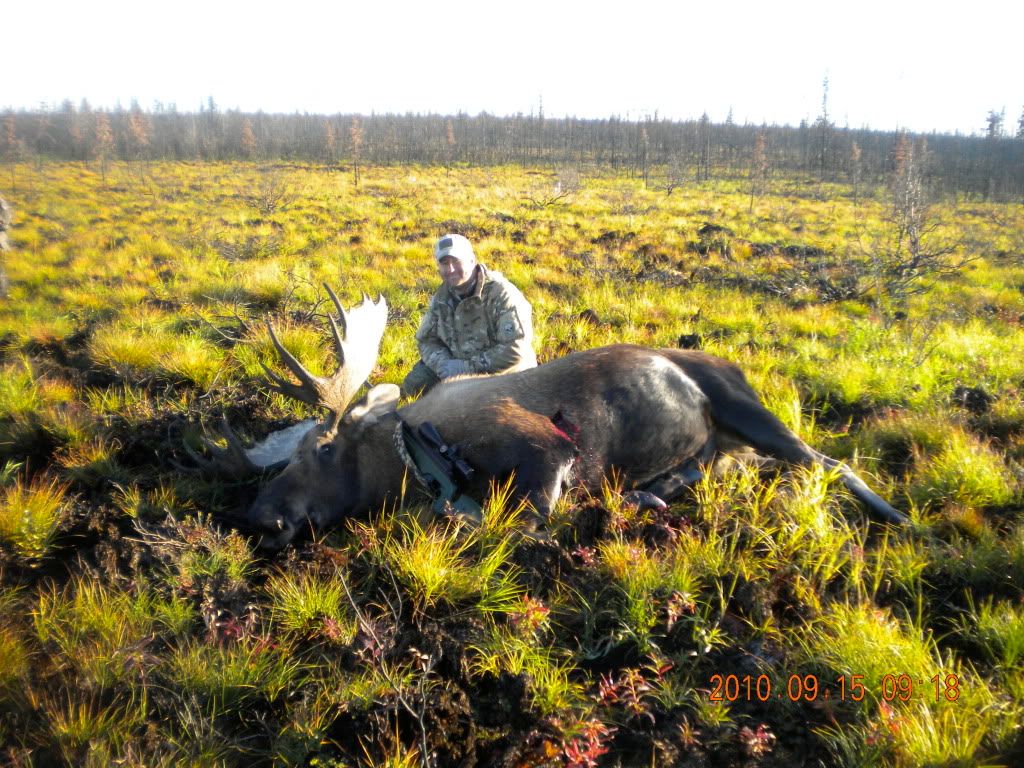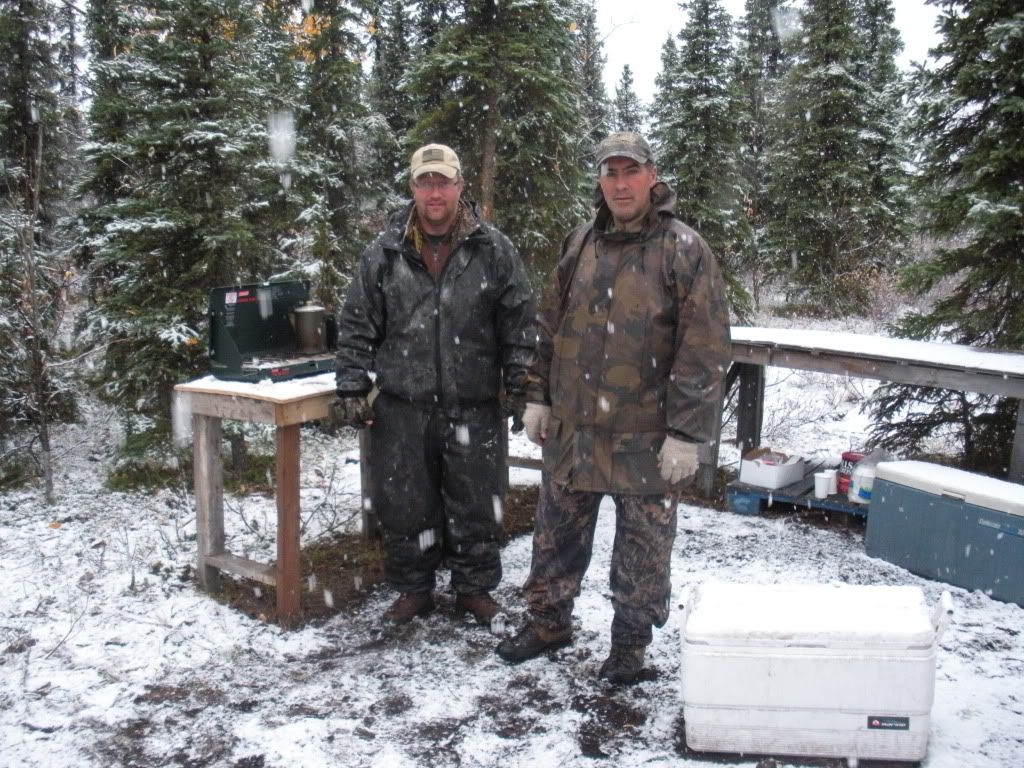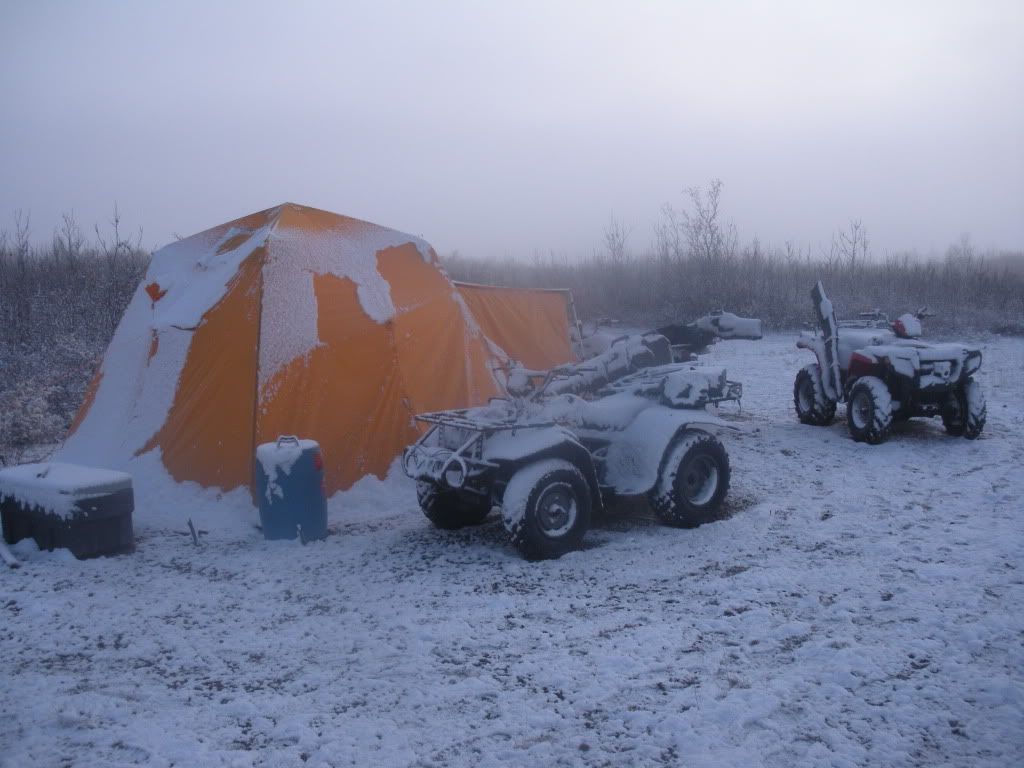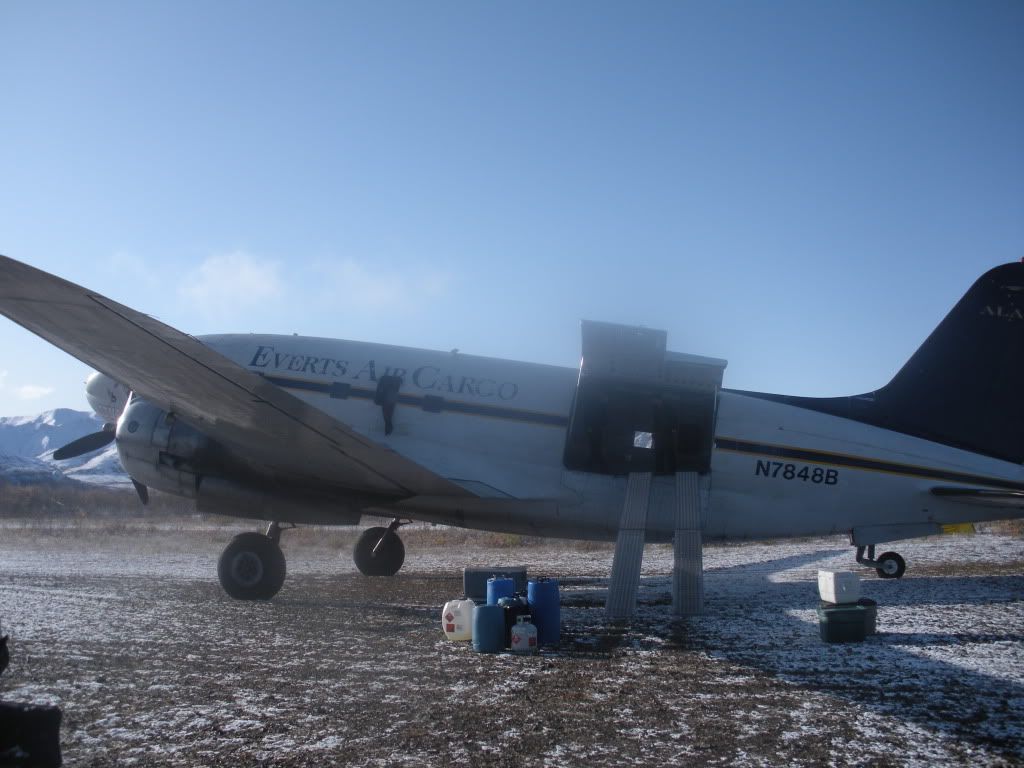Re: Moving to Alaska caliber/rifle selection
In 3 years? Gives you time to plan
Are you PCS? If so, the move will be easier, if not and moving up on your own, takes a good amount of nuggets, planning and time to get here. Winter prep your rig there before leaving. Price starts around $8000 for a 2 bedroom house move, prob more now. Its about $2 per pound and that total weight not just household goods. MailBox etc or some company has a pallet flat rate, starting around $600 and then its $150 per 100# I think. You can take firearms including handguns through Canada but its easier to ship them.
Playing in Alaska is not cheap. Toys cost a fortune and most Alaskan's these days have to have toys. Then you have to have the money and the time to play with them. Many cheechakos arrive and go into deep dept trying to get all the toys they think they need. Especially the military. The lemon lot is full of just such toys so if you want toys, I would recommend starting there. Find someone who got extended with money or PCSing with a huge note and you can pick up toys quite cheap Vs new. Most of the time E3, E4, E5 buy a 4x4 with accessories to find out they cannot afford gas and money to go play, so they have to dump it and its like new.
I recommend to save up all the nuggets you would drop on toys and use it for bush flights, once you do the math, paying for a bush plane is cheaper than having the toys. Maybe not at first but paying on a note every month for the years Vs a one time drop and most bush flighters will reserve flights all year or even longer. Cost is about $800 per hour for 180, $1200 for a Beaver but more depending on the unit. If you can get there by wheeler so can 100 others from the city.
The credit union has a toy loan where you can lump all toys onto one note; 4x4rig, camper, trailer, etc.
Long range shots, while many confess to shoot them, according to AFG, the average shot taken by Alaskan hunters is 225 yards. And I agree.
Cartridge, according to AFG the 30.06 is used by 36% of all Alaskan hunters. Followed by 338win and 300win. I would recommend one of these 3 due to things happen in Alaska and if you are 75 miles in and dump your ammo (happens every year to the best of us) having one of the above cartridges is easier to find another hunter in a camp or a shop in a village that will have it. A 45.70 is OK for 15 and I hunted 15 a lot with 338 but for the interior, not a chance I would never invest in a 45.70 for hunting.
I would surmise that you will hunt bou and moose every year, sheep and goat who knows once you try it but every year into the mountains and to include moose / bou you may have difficulty with the time and money, that will cut down on just how much hunting you can do. Brownie once and blackie maybe a couple times unless you like the taste of spring blackies. Wolf I hope you tip quite a few over every year. This is not a walk to your stand for an hour a day to tip over a whitetail on the weekend, hunting is work and lots of effort for days.
Game is not behind every tree or behind every roll, it takes time and effort to hunt, they do not come to you you have to find them, baiting blackies is the exception. Do not think you will be alone in the wilderness of Alaska. Those days are long gone. Flying over Alaska the wheeler trails scar large sections of Alaska.
The terrain is very tuff and the weather is worse. Understand they are not forgiving and will chop you without hesitation. Every year, several times a year someone gets chopped. The weather is a killer. Mountain snow is called the white dragon for a reason and breathes its icy breath of death every year. Those of us who are into avalanche awareness programs cannot understand why backcountry users do not learn to read snowpack. We even offered free basic skills class and avy tools at cost, and had little participation.
Rifle, Tikka T3 Lite SS or the SL in what ever cartridge you prefer. Its light to tote and you will tote it. Not too expensive because it will get abused. Its a good light weight tool for Alaska. Top it with a 2-8x 50mm class scope, scope does not have to be the best you can afford but do not scrimp, it will take a beating and must be on zero after all the bashing it will take. If / when you leave, you can sell it real quick and not lose much money. Rugers were very popular 20+ years ago and still are to some extend but the 700 still reigns supreme as the most bought rifle in Alaska like the states too. Christensen, HS Pre, Kimber are quite popular with the mountain hunters but cost and if you can afford one superb but they do take a beating.
I am not a 300 fan, step up to a 338 for better ballistics if you can shoot one accurate. I toted a 340Wby in a light weight rifle for 30 years until I quite hunting mid 90s. 250gr Partition at 3000fps is a good hell bender, wanted a 338-378 but just never did. But then again, 7mm08 tip over 1200# moose every fall too. Moose are not the mythical energy and bullet absorber many report they are. A good designed bullet in the engine room and a moose will tip over, maybe not dead right there but they will tip over. Natives use 243 very often and I sold more 243 ammo to natives than all other cartridges combined. My cousin tipped over a Toklat grizz with a 22.250, it was about 650 on the foot around 75 yards, one shot but he did follow it up.
The WSM are or were becoming popular but their love is fading.
My 338 was topped with a Leupold Alaskan FXII 3x and did the job for 30+ years and was my #1 go to rifle, I had a VXII 3-9 on my 300Wby and 7mmRem mag, couple Bushnells in there too on 06 etc. Some use high power high dollar scopes as a trade off to spotting scopes but its just not the same in my book when glassing for hours days at a time.
I have seen broken rifle stocks and smashed scopes from falls during sheep / goat hunts just about every year. Scree is tuff, wet scree is worse, snow scree is just pure fun and with a pack on, tired legs, tired mind, it happens to best of us. Up north, its like walking on wet greased up bowling balls, its tuff and a mile can seem like 10. Many a hunters have started out thinking they can walk the tundra for miles for early season bou until they realize just how much fun walking can be.
SS does corrode, its not impervious to Alaskan.
Get as good a pair of binos as you can afford, your eyes will appreciate this.
Get as good a spotting scope as you can afford, your eyes will appreciate this.
Get the lightest tripod you can afford your legs will appreciate this.
Get good fitting high quality boots, more about the fit than the dollar. While I know a few sheep hunters who use running shoes, I did too, its not for everyone. Scree in Alaska will eat through cheap boots sometimes in a day or two, may last the whole hunt but they will get ate up. Until you ascend 3000 feet of scree up a mountain gully, you will not know why good boots are a must, and this is done every day for as long as you hunt. Plastic boots are very common with high angle sheep and goat hunters, they offer a platform for the feet and legs due to their rigid sole on steep terrain, protect the toes against bashing on scree all day. Plus they are very warm, can pull damp liners out in camp to dry, single leather boots can stamp damp the entire trip. Steam crossings, pull off boots and use sandals or water socks. Plastic boot shells are good too, pour the water out, install liner and down the trail you go.
Good hip waders.
3 good knives with a stone or steel, I like a folder, drop point and a detailer.
Med length axe, some like saws but axe is faster but a good bow saw can double in camp that is faster than as axe too, a trade off. Weight is a concern.
Learn to field dress as the animal lays, this is not TN deer. Many Alaskan hunters waste more time and effort trying to position a moose than to just dress it as it lays. Always always take the meat first. Do not learn this lesson.
50/50 wool synth socks, I use Bridgedale.
Patagonia Capilene mid / lgt wgt base layer.
Patagonia fleece mid layer.
Primaloft sweater, I use Integral Designs.
A super light nylon wind shell I use WildThings.
Softshell jacket and pants, I use Schoeller Dynamic.
Coated nylon rain jacket and pants, you wont use these much but good to have for skinning and then toss them, bear stinks and the smell will get into everything and hard to wash out.
Primaloft parka, I use ID Dolomitti and WildThings EP.
Cheap fleece gloves, camp use etc.
Intregral Designs Primaloft sleeping bag.
Black Diamond Firstlight tent.
ID SilShelter.
MSR stove, I use SuperFly with a hanging kit but the Exp will burn anything so get both.
Head lamp or two or three.
Light weight 3 section trekking poles.
12" piece of garden hose that your penis will fit into and an odd shaped water bottle, its for relieving at night, can stay wrapped up in your sleeping bag and inside the tent and pee, good especially in a mtn blow when its 0-15f outside, will save you from being cold all night.
Waxless short fat backcountry skis, I use Fischer.
3500 - 4000ci backpack, too many too list but I used WildThings Andinista. A freighter pack is good too for flat land.
Learn to make and eat Logan bread.
Learn to make your own freeze dried meals.
Take an avalanche course.
Learn to read and understand Alaskan weather, its not the same as anywhere else.
Learn the difference between blackies and brownies, its not the same when it comes to dealing with them in the backcountry nose to nose.
Learn to cross dark cold fast moving streams.
Learn the regs, do not think you know you must know and they can be confusing at best.
Please do not hunt Chicken.
12ga shotgun with 18.5" barrel, Rem #5077 #1 bear preferred stopper with slugs
454 Cas, 460sw or 500sw revolver, I like the 460
1911
22 rifle
22 handgun
Rossi Trifeccta kept in your rigs; wheeler, plane, boat, etc with some ammo in a dry box. Throw some energy bars and fire starter etc in with the ammo.
Pepper spray
Bears in the interior, squarbanks are not that big, 600-850 on the foot. Learn the signs of bears in the area, camp raiders will let you know, some times the smell if you are acute to it. The terrain is open and easier to spot bears. Head to the southern coast and they get real big, the terrain is dead falls, head high grass and brush. Standing by the big ole booboo in the federal building, record book man attacker, you will understand just how much animal you may have to deal with. But, being afraid is not good either, just respect. Actually. moose are more dangerous in the backcountry than bears. I have been charged way many more times by moose than bears, moose charge and bears slither off, bluff, moose charge 100% of the time they decide to go. Pepper spray is best for unwanted curious bears. And yes I have been charged by a bear but most have been bluffs.
I was a guide and taught backcountry skills and survival for years in Alaska, need to know anything just ask. I do not know everything but at least I lived my life here and played most of it so I can help better than most. I made many mistakes, have seen many mistakes and investigated them or got the data afterward to understand what went wrong. I PCS out and then back. I helped many troops get here and civilians too.
Yep, I know a few isolated holes but sorry its a family secret. You will find this out real quick, once you find a hole you will keep it a secret or do your best too.
Good luck









